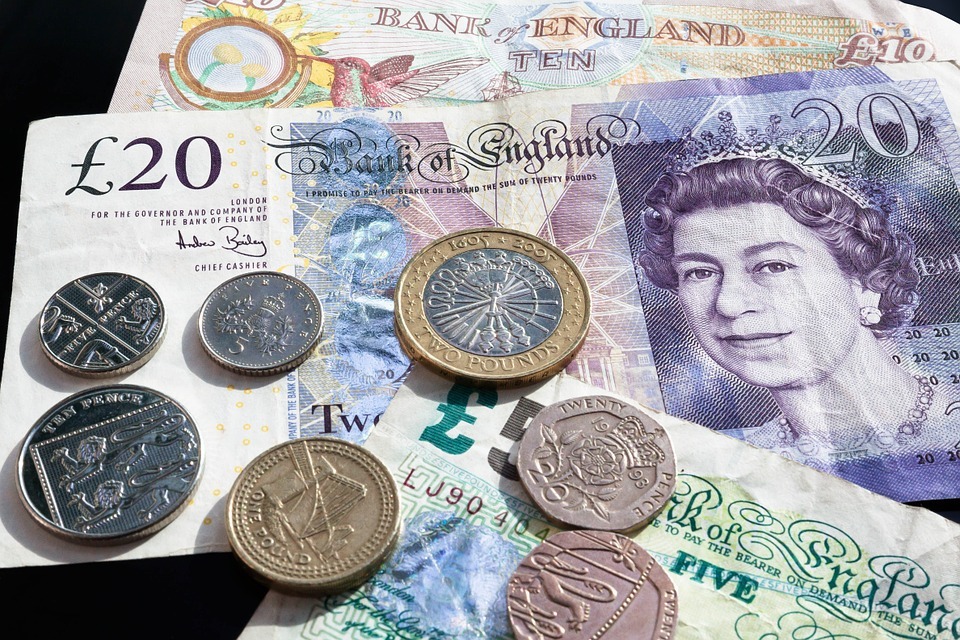Central Bank and Their Role in the Forex Market
Central banks sit at the heart of Forex trading. Nowadays, everything depends on what a central bank will do with the interest rates and the monetary policy at the next meeting.
So far in this Trading Academy, we explained why the value of a currency depends on its interest rate. The rule goes that the higher the interest rate is, the stronger the currency.
Yet, if it would be that simple, everyone would make money in Forex trading. Which, we know is not true.
The perfect example comes from the current discrepancy between the Federal Reserve of the United States (Fed) monetary policy and the European Central Bank (ECB)’s one. In the last year or so, the Fed started to tighten the monetary policy.
It raised rates three or four times already. At the same time, the ECB did nothing.
Not only did it not raise the rates, but it kept them below zero, into negative territory. And, on top of that, it continued to ease the policy.
In normal times, the USD should fly higher. It should appreciate, while traders should dump the Euro.
Still, the opposite happened. To the surprise of everyone, Euro surged, and the dollar collapsed.
How come? That’s the beauty of Forex trading and the complexity of fundamental analysis.
It isn’t a one-way street, but the sum of various factors that matter.

Central Banks Mandates
Even before the Bretton Woods conference, central banks handled the monetary policy in major economies in the world. The Fed, Bank of England, Banque the France and even the German central bank were in close contact before World War II started.

Even if distances were the same, the time to visit different jurisdictions differed. For Bank of England to meet with the New York Fed’s leadership, a long, two-week trip across the Atlantic was needed.
What’s interesting is that the most significant central banks in the world communicated then, as they do now. Only that nowadays the information travels much faster.
Also interesting is that the aim was similar then, as it is now: to protect the value of money. More precisely, to protect against inflation.
In those times, gold played a significant role. Most economies pegged their currencies against gold.

As such, central banks could not print infinite amounts of paper money without backing the quantities with physical gold in the banks’ vaults. But the aim, again, was the same: to protect against inflation.
After the Nixon shock in 1971, central banks suddenly became more important. Starting with the Fed in the United States, one by one, the big powers dropped the gold standard.
From that moment on, it all became a matter of trust. However, the mission remained the same: with or without gold backing, the central banks must defend against inflation.
To this day, inflation remains on top of the list. Recently, the mandate revolves around the two percent range. Don’t take it literally, though.
Central banks target an area or a corridor. Values like 1.8% or 2.2% represent normal inflation.
Forex Trading and Central Banks’ Actions
The more inflation misses the target, the more active a central bank becomes. The typical reaction is to raise the rates with rising inflation and cut them when it falls.
However, tactics need to change the more inflation fails to meet the target. Recently, central banks needed unprecedented measures to move inflation back to the goal.
Did they succeed? Time will tell.
But why does the world need inflation? Isn’t it ironic that central banks end up creating exactly what they need to protect from?
The thing is that the role of a central bank doesn’t stop with inflation. That’s the core element, but the idea is to have a working economy, with consumer spending at the heart of it.
A healthy economy is one that grows at a rate that ensures everyone benefits. Such a growth rate needs a certain inflationary level.
With oil around for some time now, inflation changed too. Let’s not forget the definition of it: it shows the change in the price of goods and services.
When one single element, like oil, influences the price of other goods and services, central banks tend to disregard it. Because of that, they look at the core changes in prices, meaning they exclude oil and energy.
Today’s Forex trading is more a game of expectations rather than reacting to some news. Or, traders respond to economic news, expecting the central bank to do something at the next meeting.
Price Stability
Another thing central banks value is price stability. Funny enough, it doesn’t refer to inflation, but to volatility.
While traders love volatility, as it leaves room for speculation and quick profits (but also losses), central banks hate it. There have been many times where major central banks around the world intervened or stood ready to intervene to fight increased volatility.
One example comes from Switzerland. The Swiss National Bank has the ingrate mission to set the interest rate over one of the most wanted currencies in the world: the Swiss Franc.

Due to the country’s stability and neutrality, people from all over the world flock to Switzerland and place their savings. What better currency to choose than the Swiss Franc?
The problem comes from a simple economic principle: a stronger currency makes it difficult for an economy to compete on the global stage. Someone needs to do something, and that’s the central bank.
When uncertainty and global risks affect financial markets, the Swiss Franc appreciates. Without the central bank’s intervention to keep its value relative stable, the Franc will rise in an uncontrolled spiral.
Most of the time the banks lose on their attempt at intervention. However, it is a calculated risk, as the cost of doing nothing is far greater.
For example, the SNB stated publicly that the bank stands ready to intervene during the Brexit referendum if the British choose to leave the European Union. The Brits voted to leave, and the CHF was one of the quietest currencies of them all. Wonder why?
Conclusion
As stated in the fundamental analysis article in this Trading Academy, everything surrounding Forex trading is about the interest rate level. And not only Forex trading depends on it, but all financial markets.
Wrongly, traders think a currency appreciates or depreciates because the jobs data exceeded expectations or because inflation tanked. The traders react like they do because the expectations created by the economic data: they position for the next move in the interest rate level.
For central banks, everything matters, not only inflation or what’s in the mandate (the Fed has a dual mandate – inflation and job creation). They look at the stock market, and the global economy, possible headwinds, and even at the political events in different parts of the world.
An army of researchers makes sure the central bankers have all the data needed to analyze an economy. Individual retail traders, don’t enjoy such luxury.
But, the right positioning comes from understanding what matters from a central bank before moving the rates. Also, understanding the mandate and what length the central bank will go to fulfill it.
Perhaps the most important quality of a central bank is their independence. Capitalistic economies pride themselves with independent central banks, that don’t answer to politics, only for the reason of keeping objectivity.
The value of money, after all, depends on the level of interest rates, and with a simple stroke of a pen, governments can change that overnight. Knowing central banks are independent, makes Forex trading a free market, where only the informed survive.


